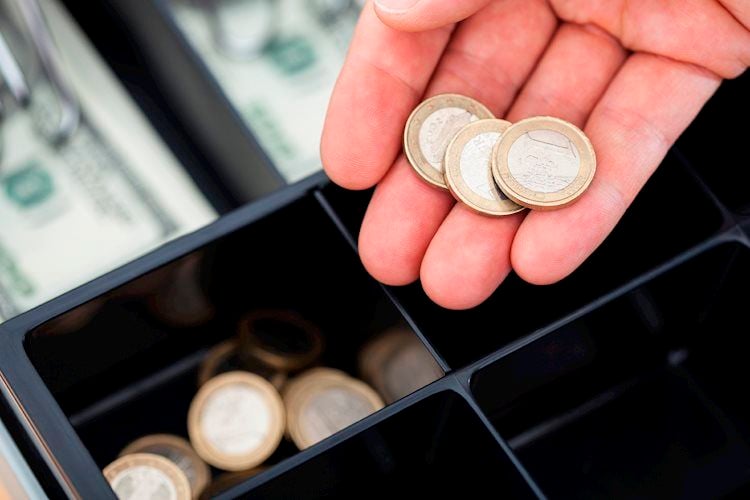Just over a week after an agreement between Ukraine and Russia to allow grain exports amid the war, the first ship loaded with grain left the port of Odessa on Monday.
The Sierra Leone-flagged ship Razoni is loaded with 26,500 metric tons (equivalent to about 29,000 short tons, the unit of mass used in the US) of Ukrainian corn and was sailing through the Black Sea towards the Bosphorus Strait, through which it will reach the Mediterranean Sea and global markets, according to satellite tracker MarineTraffic. His reported destination is Tripoli, Lebanon.
The agreement between Ukraine and Russia was signed on July 22 and brokered by Turkey, which controls the Bosphorus and will monitor compliance with the pact, and under the auspices of the United Nations.
It allows the export of five million tons of cereals from Ukraine per month, through a safe corridor in the Black Sea, and implies a ceasefire between Ukraine and Russia, which has been at war since 24 February, around this maritime corridor.

The deal came into question just a day after it was signed, when Russia attacked port facilities in Odessa with cruise missiles. But so far, the parties have continued in its implementation.
Since the start of the war, an estimated 20 million tonnes of Ukrainian grain has not been exported after harvest, and the deal is expected to allow the grain to enter markets and help avert the food crisis that the UN has warned.
But where do the grains produced in Ukraine go?
According to the US Department of Agriculture, Ukraine exported grain worth US$27.8 billion in 2021.
European Union, China and India, main destinations
Ukraine’s main market is the European Union (EU), which was responsible for US$ 7.7 billion (R$ 40 billion) in purchases, followed by China, with US$ 4.2 billion (R$ 21.8 billion). ), and India, with US$ 2 billion (R$ 10.4 billion).
The three agricultural products that lead Ukrainian exports are sunflower seeds (US$6.4 billion/R$33.2 billion), corn (US$5.9 billion/R$30.6 billion) and wheat (US$5. 1 billion/R$ 26.5 billion). It is followed by rapeseed (US$ 1.7 billion/R$ 8.8 billion), barley (US$ 1.3 billion/R$ 6.7 billion) and sunflower meal (US$ 1.2 billion/R$ 6.2 billion), a by-product of sunflower milling used as animal feed.
India is the main buyer of Ukrainian sunflower seeds, while China is the main buyer of corn, barley and sunflower meal.
European Union countries, as a whole, the biggest buyers of Ukrainian agricultural products, lead in the purchase of rapeseed (used to make canola oil), and rank second in corn, sunflower seedlings and sunflower meal.
Egypt, Indonesia and Turkey, main wheat buyers
Within the EU, the main destinations are Poland (6.19% of total Ukrainian exports), Germany (4.02%), Italy (3.72%), Netherlands (3.44%), Hungary (2.87% ) and Spain (2.43%), according to the Observatory of Economic Complexity.
Other major buyers are Egypt (top buyer of wheat and top buyer of corn), Turkey (3rd largest buyer of wheat and second largest buyer of wheat), Indonesia (second largest buyer of wheat), Pakistan (beehives), Saudi Arabia (barley ), Belarus (sunflower meal) and the United Kingdom (colmada).
What is the agreement between Ukraine and Russia to export grain?
These are some of the main provisions of the agreement signed on July 22 by Ukraine, Russia and Turkey under UN auspices:
- Ukrainian ships will guide the entry and exit of ships loaded with grain through a corridor in mined port waters in the Black Sea;
- In total, 5 million tons of grain can be moved per month;
- Russia will accept a truce as long as shipments are made through three Ukrainian ports, including Odessa, and around any ships affected by the transfer;
- Turkey will inspect the ships to alleviate Russia’s fears that they may transport smuggled weapons and establish a Joint Coordination Center in Istanbul to act in the event of conflict;
- It is estimated that it could take weeks for the first shipments to start, due to the numerous logistical details that need to be designed.
Russia and Ukraine are two of the world’s biggest exporters of cereals, especially wheat and sunflowers, and since the beginning of the war Ukrainian exports have been severely constrained by the conflict, especially given that Russia controls the waters of the Black Sea, on whose coast are the main Ukrainian ports.
Both countries are responsible for a third of global wheat exports and 60% of sunflower oil, and of every 100 calories of food traded in the world, 12 come from Russia and Ukraine, according to data from the International Institute for Research on Food Policy.
In peacetime, Ukraine exports three-quarters of its production, and 90% of those exports take place through ports on the Black Sea, according to information from the European Commission.
Declining Ukrainian exports and the global situation caused by the war have affected global food prices as there are around 20 million tonnes of grain held back in Ukraine.
According to June data from the Food and Agriculture Organization of the United Nations (FAO), food prices in the world have risen by 17% since the beginning of the war in February, and by 21% in the case of grains.
*US$ 1 = R$ 5.20
Source: CNN Brasil
I’m James Harper, a highly experienced and accomplished news writer for World Stock Market. I have been writing in the Politics section of the website for over five years, providing readers with up-to-date and insightful information about current events in politics. My work is widely read and respected by many industry professionals as well as laymen.






